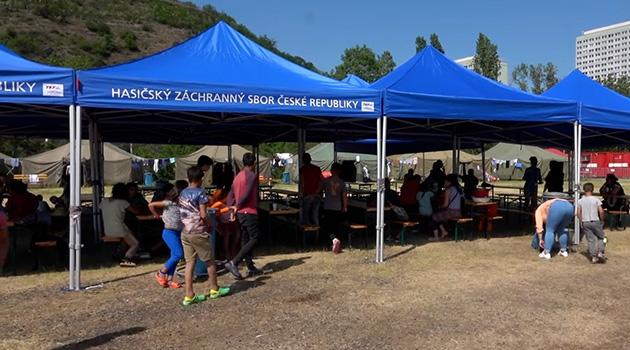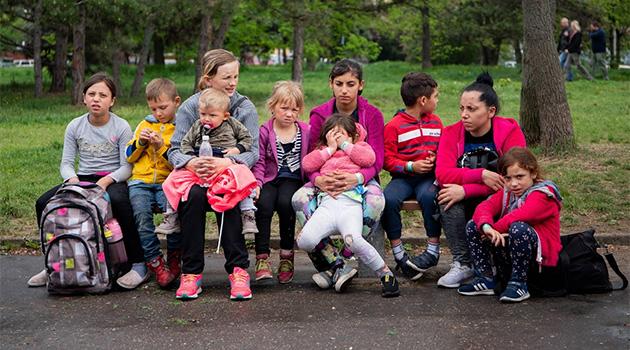KHAMORO World Roma Festival visits refugee camp in Czech capital, Vojta Lavička and the Surmaj brothers perform there

On Thursday afternoon, the KHAMORO World Roma Festival visited the refugee camp in Prague’s Troja quarter. Romani violinist Vojta Lavička played with the Surmaj brothers and Nikolas Petík danced there for the Romani children and women who have fled Ukraine.
The festival offered concerts, exhibitions and theater performances since 29 May and closed with a gala concert by Romani musicians on 4 June. The festival program, organized by the NGO Slovo 21, is on its website.
“I am very glad that this was also part of the KHAMORO festival and it was clear that [the refugees] were happy to have this program,” said Lavička, who was also the festival spokesperson. Petík described the performance at the refugee camp, where filming and photography were not allowed, as follows: “It was very nice, the children got involved, one Romani woman danced with me. I feel very good about it.”
The KHAMORO Festival resumed live performances this year after a break caused by the COVID-19 pandemic and the Government measures to suppress it. The subtitle of this year’s festival events was “Let’s get together”, as stated by the director of Slovo 21, Jelena Silajdžic.
This year the bands Connection and Imperio from the Czech Republic, Israel’s Mediterranean Gypsy Swing Experience, and the brass band of The Elvis Ajdinovic Orkestar performed. The band Le Chhavendar and dancers from the Lucia Guarnido Studio Ballet also performed at Saturday’s closing gala concert at the Archa Theater.
A performance was also given by some members of the only professional Romani theater ensemble in Ukraine, the Romans Theater, who fled to Poland before Russia intensified its war on Ukraine in February. According to the organizers, KHAMORO (“Sun” in Romanes) is the biggest festival in the world of musicians and other artists and performers who are professionals from the Romani community.
Prague has hosted the festival since 1999. In recent years it has been visited by about 10 000 people annually.
